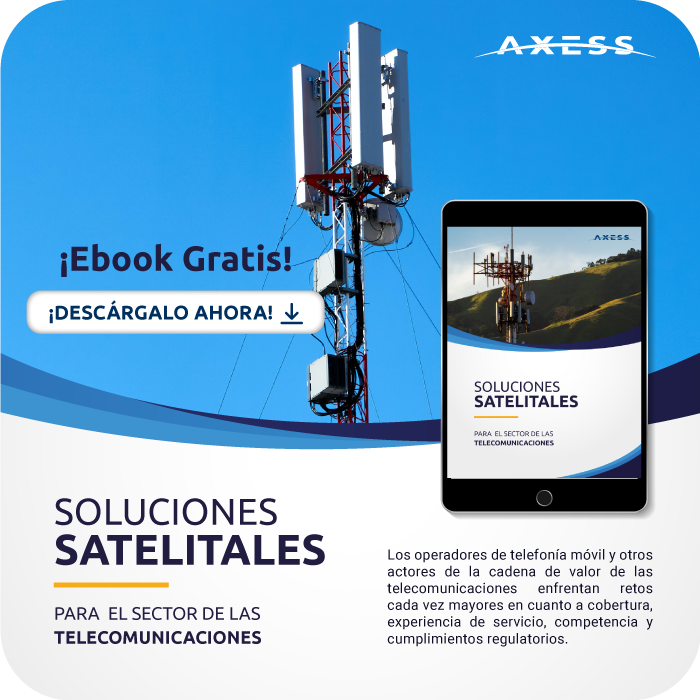
Avoid 5 mistakes when choosing a satellite internet provider
21 September, 2018
Why bet on differentiation through service experience?
30 October, 2018The purpose of satellite links is to eliminate the limits in communication globally
One of the main advantages that the satellite Internet offers in comparison to broadband connections via asymmetric digital subscriber line (ADSL) or fiber optics, is its unmatched coverage. This technology has the ability to take Internet to areas where others cannot reach due to lack of infrastructure; for example, open sea and other isolated areas, such as oil platforms or fishing boats and mountain or mining populations. But how does a satellite link work to make this happen?
The basic necessary elements to make a satellite link are three: a terrestrial transmission station, a geostationary satellite with transponders enabled to cover a given area and a receiving terrestrial station. The circular orbit of the satellites is 35 800 kilometers, therefore, it lasts 24 hours; that is, it is “synchronized” with the Earth, it seems motionless at a fixed point on the globe, but in reality, it moves to the rhythm of the planet. The geostationary orbits can be elliptically inclined, polar circular or equatorial circular.
Three stages make up the satellite link, two of them are carried out in the terrestrial stations and the third in outer space: the terrestrial stages are the uplink and downlink models, the spatial happens when the upload signal crosses the satellite transponder and then return to Earth. The transponders are blocks installed inside the satellite and receive, change and transmit satellite frequencies, thus enabling the information sent by the base to reach the receiving antennas.
The uplink uses an upward beam to deliver the signals to the satellite, which sends the requested signals to the planet through a downward beam during the downlink; the speed of ascent is greater than that of descent in order to prevent interference between both beams and because the power availability is greater on Earth. Different polarizations are implemented to ensure that there is no interference between the nearby channels of the descending beam.
Infrastructure needed for a satellite link: antenna, modem, teleports and network operations center on Earth; in space, satellite, transponders and a backbone.
Each of the infrastructure technologies performs specialized tasks:
+ Antenna: bidirectional transmitter that sends and receives information from the satellite, points directly to it (thus avoiding interference and improving the transmission speed), its size ranges from 0.75 to 1.8 meters in diameter.
+ Modem: “translates” the information received analogically by the antenna so that computers can interpret it, since they only work with digital information; and vice versa, it also “translates” from digital to analog.
+ Teleports: permanent structures owned by the Internet provider which purpose is to facilitate satellite-user connectivity.
+ Network operations center: facilities responsible for controlling multiple satellite connections; In general, they monitor speed and signal.
+ Satellite: it is responsible for receiving information requests made by users, which it sends to the network’s operations center, where the requests are processed to then send packets of information to the satellite, which, in turn, forwards to users to satisfy their requests.
+ Transponders: devices that receive and transmit information where required; there may be between 36 and 72 of them on a satellite.
+ Backbone: high flow link that forms the main connection axis, transmits data at high speed.
While this technology is mainly used in remote areas, satellite Internet connections also offer certain advantages to cities. In this regard, we talked with Pablo Hoyos, our Regional VP of Business Lines and Operations at AXESS, about the benefits. Hoyos commented “in urban areas the main use given to satellite channels is as backup or contingency.” Good practices suggest operations with a main link and its connectivity support with a service provided by a company other than the main internet provider. In this regard, Hoyos said “it is essential to have support channels that allow the continuity of the business to be maintained in the event of failures of its main channels.” AXESS is a leader in Latin America and one of the experts in satellite Internet and telecommunications links. The business service provides guaranteed availability greater than 99.6% and has a specialized team to meet your requirements 365 days a year.






